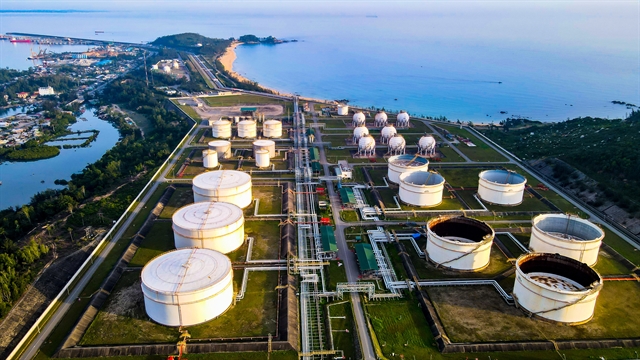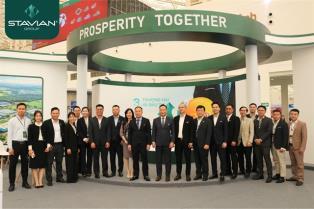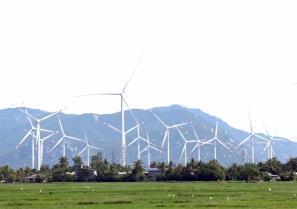Việt Nam rolls out E10 fuel in major step towards green energy transition
The nationwide adoption of E10 fuel reflects the country’s commitment to achieving net-zero emissions by 2050 and advancing a low-carbon, sustainable energy model.

From January 1, 2026, all petrol sold across Việt Nam must contain 10 per cent ethanol (E10), in a landmark move to accelerate the country’s transition to green energy and support its long-term carbon neutrality targets.
The nationwide adoption of E10 fuel reflects the country’s commitment to achieving net-zero emissions by 2050 and advancing a low-carbon, sustainable energy model.
Trần Minh, deputy director of the Department of Innovation, Green Transition and Industrial Promotion under the Ministry of Industry and Trade (MoIT), said the country would need between one million and 1.5 million cubic metres of ethanol annually to support the nationwide implementation of E10 gasoline starting in 2026.
Currently, domestic production can only meet about 40 per cent of that demand, or approximately 450,000 cu.m, leaving a significant shortfall to be filled through imports from ethanol-producing countries such as the US and Argentina.
Minister of Industry and Trade Nguyễn Hồng Diên has issued a directive detailing key solutions to realise Việt Nam's E10 gasoline roadmap.
Key initiatives involve upgrading ethanol production facilities, expanding blending and distribution infrastructure in major economic regions and ensuring a sustainable supply of raw materials such as cassava, sugarcane and maize. The directive also encourages investment in next-generation ethanol technologies.
A strong communication campaign is planned to raise public awareness of the environmental, economic and quality benefits of biofuels. Additionally, the ministry will work closely with local governments to integrate E10 consumption targets into annual development plans and create favourable conditions to attract both domestic and foreign private investment.
Under the new directive, all petrol types sold, including A92 and A95, must be blended with 10 per cent ethanol to create E10 fuel. With national petrol consumption estimated between 12 million and 15 million cu.m per year, the policy is expected to drive annual ethanol demand to as much as 1.5 million cu.m.
The anticipated ethanol supply gap has prompted renewed efforts to restart dormant biofuel production facilities, particularly those in Dung Quất in Quảng Ngãi, Đồng Nai and Quảng Nam (Đà Nẵng).
Previously, the Vietnam National Industry - Energy Group and the Bình Sơn Refining and Petrochemical JSC (BSR) had announced plans to produce E10 fuel using ethanol sourced from the Dung Quất plant.
This move supports national green energy objectives and aligns with key Việt Nam Communist Party resolutions for the 2025-2030 term, contributing to Việt Nam’s broader strategy for green and digital transformation.

Meanwhile, the Vietnam Central Biofuels JSC plans to restart its long-idled Dung Quất biofuel plant in September, with trial operations set for October and full commercial production expected in November, supplying ethanol for E10 fuel, according to director Phạm Văn Vượng.
The plant’s CO2 recovery system will be expanded by 40-50 tonnes per day to improve efficiency.
The company, jointly owned by subsidiaries of State-run energy giant Petrovietnam, including Bình Sơn Petrochemical Refining (61 per cent), PV Oil (38.75 per cent) and PETROSETCO (0.25 per cent), operates Dung Quất biofuel plant, which produced around 330 tonnes of ethanol per day in 2014.
The plant has temporarily halted operation due to poor market conditions and profitability challenges. The resumption of production aligns with Việt Nam’s green energy ambitions.
In parallel, the Bình Sơn Refining and Petrochemical JSC (BSR) plans to begin trial blending of E10 fuel in August, with initial distribution targeted for the central region, marking an important milestone in Việt Nam’s readiness for the 2026 nationwide E10 mandate.
Similarly, the PetroVietnam Oil Corporation JSC (PVOIL) has announced it will begin piloting the sale of E10 fuel in select areas this September, as part of its roadmap to fully transition to E10 fuel nationwide by January 1, 2026.
CEO Cao Hoài Dương confirmed the corporation was ready to implement the Prime Minister’s directive and would ensure a stable supply of ethanol for blending by sourcing from both domestic producers and international suppliers.
Regulatory authorities were expected to issue official standards for E10 biofuel in the near future. Enterprises involved in fuel blending, including PVOIL, would produce E10 in accordance with these standards.
Dương said the corporation was actively completing procedures to certify its E10 blending facilities for conformity. This step was part of its preparation to officially begin selling E10 fuel on the domestic market.
Việt Nam is now home to six ethanol production plants, but only two, in Đồng Nai and Đà Nẵng, are operating consistently, generating approximately 100,000 cu.m annually.
Industry officials estimate that if all six facilities resume operations, total domestic ethanol production could rise to 500,000 cu.m per year, helping narrow the supply gap ahead of the 2026 E10 fuel rollout.
Globally, more than 50 countries have embraced biofuels as part of their energy transition strategies. In Việt Nam, 214 fuel depots across the country, along with leading energy corporations like Petrolimex, PVOIL and Saigon Petro as well as major refineries including Bình Sơn and Nghi Sơn are now technically equipped to store, blend and distribute E10 fuel.
According to experts, with the necessary infrastructure now in place, Việt Nam is set to fully implement E10 fuel across the country. This transition is anticipated to reduce reliance on imported fossil fuels, boost environmental protection efforts, promote a circular economy and reinforce the nation’s commitments under international climate agreements, including the COP26 framework. VNS





